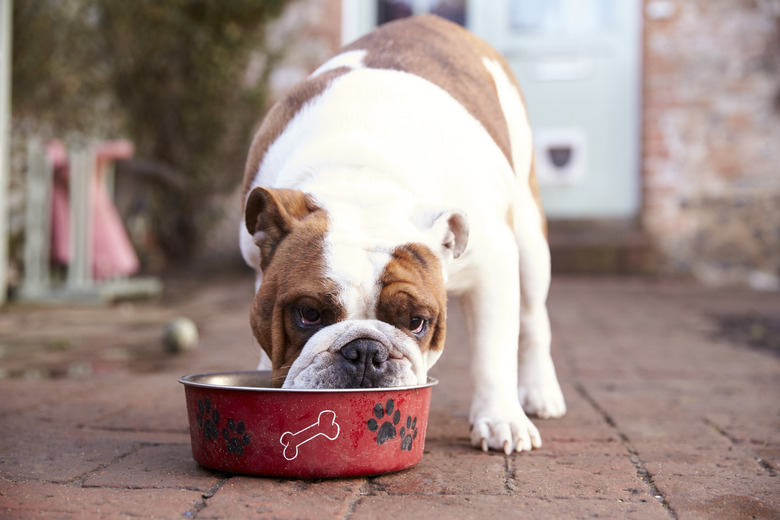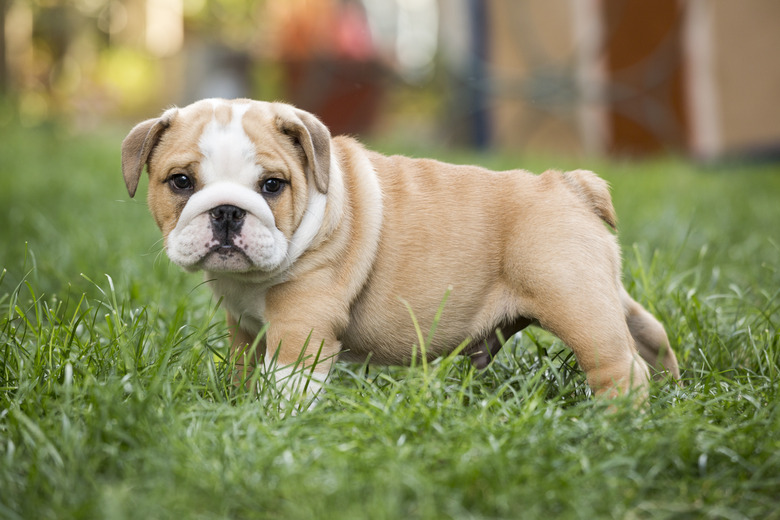How To Take Care Of A Pregnant English Bulldog
When your English bulldog is having puppies, you'll need to take extra care to ensure a successful and healthy pregnancy and delivery. While much of the care during pregnancy remains the same, with an English bulldog, you will schedule the birth via Cesarean section. Since this breed is more likely to have complications and problems during birth, consider the risks and health of your dog when deciding to breed her.
English bulldog breeding considerations
English bulldog breeding considerations
Breeding an English bulldog comes with more risks and complications than other breeds. The Bulldog Club of America offers some strict guidelines for what it takes to be a conscientious breeder. They state that bulldogs should not be bred until they are at least 1 1/2 years old and have had at least two to three seasons. Nor should they be bred after reaching five years of age without veterinary approval. Additionally, pregnancy can take a toll and most bulldogs should not have more than three pregnancies in their lifetimes unless a veterinarian clears her health for a fourth pregnancy.
Prior to breeding, make sure your bulldog has received her vaccinations for distemper, parvo, lime, and rabies within the previous 12 months. This helps to boost the puppies' passive immunity from the mother's colostrum. Do not vaccinate your bulldog during pregnancy as this can lead to complications. Additionally, make sure she has been dewormed before she goes into season and is taking a heartworm preventative. These steps before breeding help to ensure the health of the puppies.
Care during pregnancy
Care during pregnancy
During the first month of pregnancy, feed your dog a high-quality, adult dog food. In the fifth week of pregnancy, start to transition her to a higher calorie diet. Mixing half adult food and half puppy food for one week, then switch to puppy food for the remainder of her pregnancy. Avoid calcium supplements or bone meal, but consider adding a multivitamin to her food.
Work closely with your veterinarian and follow her instructions and advice to ensure your pregnant bulldog gets the nutrients and calories she needs. During the last weeks of pregnancy, your dog will be eating 30 to 50 percent more calories. Feed multiple small meals to avoid the discomfort of one large meal.
Bulldogs are fairly sedentary creatures and only require moderate exercise, so you probably won't have to cut back on her exercise too much until the later part of pregnancy when her belly is enlarged. Take her for shorter, more frequent walks and avoid anything strenuous. This is especially important if she is pregnant during the heat of summer. Bulldogs have a short muzzle and have difficulty breathing when it is hot or humid. Also, be sure to avoid stairs and pools that may be hazardous to your bulldog.
Preparing for delivery
Preparing for delivery
Offer a quiet place for your pregnant bulldog to relax as she progresses in her pregnancy. This gives her a stress-free place to rest away from the household hustle-bustle. A few days before her due date, she may start to display nesting behavior. Allow her to make a birthing place with old blankets or towels, even though she won't be giving birth naturally.
While some breeders may schedule a Cesarian section for 60 days after the last breeding or artificial insemination, the Bulldog Club of America does not recommend this. If you deliver the puppies earlier than nature intended, they miss out on critical development time and are less likely to be healthy puppies.
Starting one week before her delivery date, stay in daily contact with your veterinarian and begin evaluating your English bulldog for labor signs. Take her temperature three times per day and watch for the temperature to drop. This is an indication that she will deliver in the next 12 to 24 hours. When the temperature drops, take your bulldog in for her C-section.
English bulldog labor and delivery
English bulldog labor and delivery
It is very rare that a bulldog can give birth naturally. Most dogs have difficulty whelping because the fetuses' heads are too large to pass through the mother's pelvis. In addition, with their short noses, bulldogs may experience difficulty breathing during strenuous labor and may become exhausted before delivering all of the pups. Don't attempt a natural birth unless your veterinarian advises that it is feasible after examining the dog. Even with that recommendation, it is best to have your veterinarian on hand in case an emergency C-section is necessary to avoid risking the life of the mother and her puppies.
After the C-section, you can usually take your bulldog and her litter home after about an hour. Make sure you have a box to transport the dogs and a heated whelping box prepared at home. During the first five days, keep the temperature between 85 to 90 degrees Fahrenheit then slowly decrease the temperature to about 80 degrees. Bulldogs are not usually good mothers, so be prepared to monitor the pups to make sure they are nursing and that the mother doesn't accidentally lie down on them.
Your bulldog may have discharge from the surgery for up to three days. If the discharge is brownish red or has a bad odor, contact your veterinarian.
Always check with your veterinarian before changing your pet's diet, medication, or physical activity routines. This information is not a substitute for a vet's opinion.


